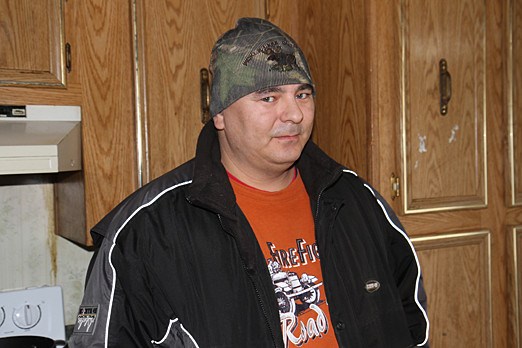Steve Lawson moved into his home with his four children and spouse after he qualified seven years ago.
The Mishkeegogamang First Nation resident lived with his brother for two years before that.
There’s no running water in his three-bedroom home, so the family is forced to use a flat pedal when bathing. There’s been no efforts made to connect his home to running water, and the father said he feels embarrassed to let the public know how he's living.
“My daughters are getting older, one of them is 16 and they need a clean washroom,” Lawson said.
“I’ve lived in this house for seven years without running water. I get my water from the main reserve. Other than washing dishes, I run outside and go to the pump house. The pump house is only 30 feet away from my house.”
Story continues after video ...
The trailer unit that he calls home is still an upgrade from Lawson’s previous living conditions, specifically a cabin in the woods he once lived in that featured no electricity.
Now that he has a family, he said he wants to make sure he has a house that meets their basic needs. Those needs include running water.
Lawson’s situation isn’t unique in his community, and many other people in Mishkeegogamang First Nation resident also have homes without running water.
Mishkeegogamang Chief Connie Gray-McKay said a lack of running water isn’t the only problem residents face. Many homes are also dealing with severe overcrowding.
“We went out and shopped around for trailers we could buy with the small budget that we had,” Gray-McKay said. “We can get some of the people away from each other that would help solve some of the problems.”
The band attempted to get 10 four-bedroom, 10 three-bedroom and five two-bedroom homes built for the community. Some new homes were built last November, but no one was able to move in because the hydro wasn’t hooked up.
“They can’t get their act in order,” she said. “They’re vacant all these houses.”
She added that officials with the hydro company said they would come within the month to hook the houses up.
Mishkeegogamang isn’t the only First Nation community that deals with overcrowding.
A report from the Nishnawbe Aski Nation showed that in Fort Hope, the population was more than 1,270, but the community had 273 existing houses in 2008 with only 110 of those units considered adequate.
The report also showed that another 83 homes needed to be replaced and 80 needed major repairs.
The situation was the same in Kasabonika Lake First Nation. With a population of about 900 in 2009, the number of homes in 2008 was said to be at 189 and only 69 of those units were considered adequate.
Tthe remaining houses either needed major renovations or had to be replaced all together.
Stephen Anderson and his wife Mina moved into a small shelter in Kasabonika just next door to their children’s home.
Anderson said they moved because they wanted to give their children and grandchildren more space.
In order to give himself a place to stay, Anderson converted his shed into a home for him and his wife.
He said he grew up living with little and didn’t mind the smaller sized home, but still wanted to make sure his family had all the comforts they needed.
Kasabonika Lake band councilor Gordon Morris said overcrowding is a huge issue in his community in part because the population has had a baby boom.
“Right now we need about a lot more units in order to accommodate families,” Morris said.
“Grandparents are staying with their kids. This is a major problem. Whatever we get from (Aboriginal and Northern Affairs Canada) is not enough.”
Morris said some residents move away to places such as Thunder Bay because there is no housing.
